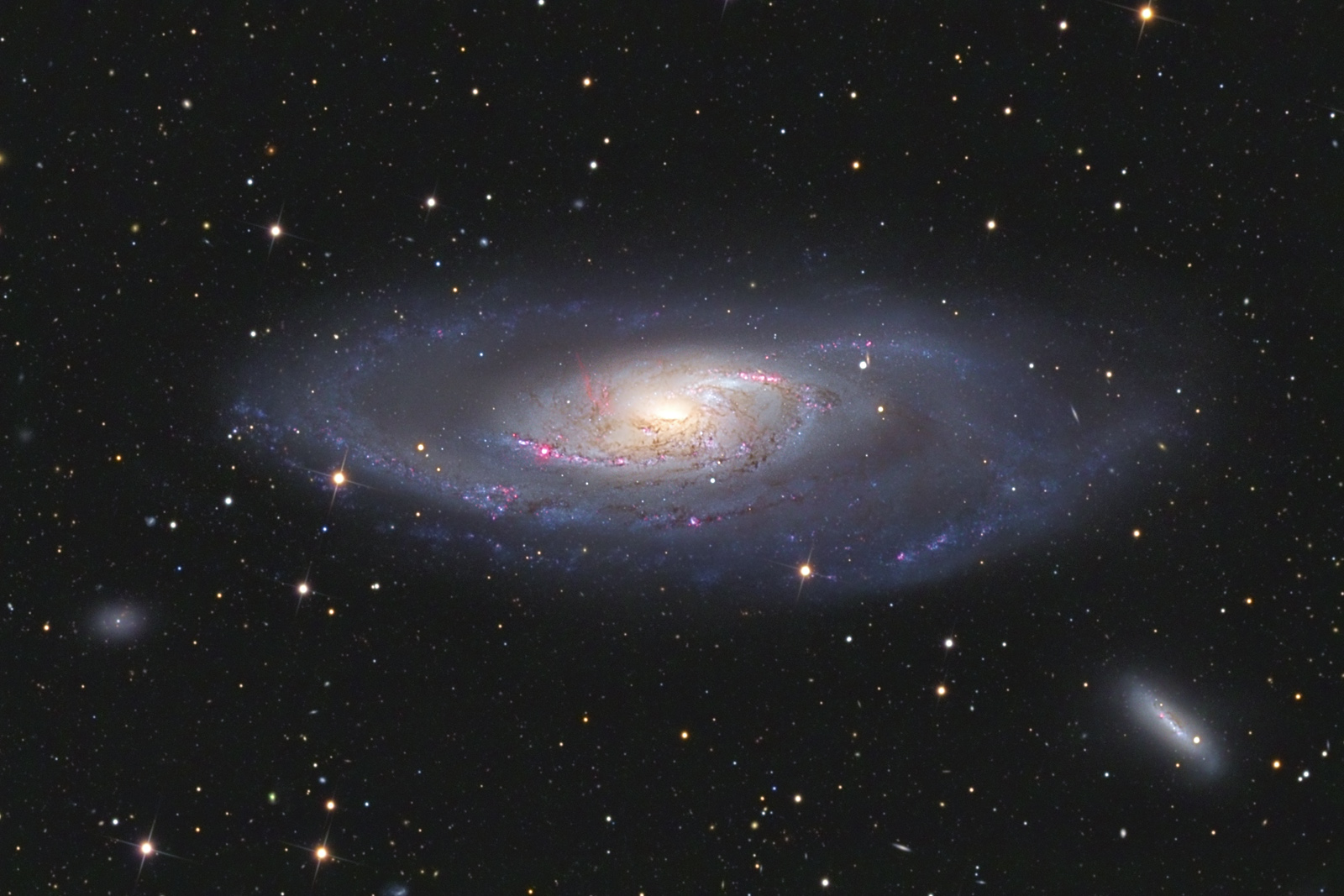
 |
Spiral Galaxy M106 |
|||||||||||||||||||||
About This PhotographSituated some 22 million light years from Earth sits spiral galaxy M106. Its somewhat warped structure is a tell-tale sign of recent disturbance of this island universe. Gravitational interaction with nearby galaxies has caused this distortion, as well as triggered a bout of star formation throughout its extent, seen as brush-stroke clusters of young, blue-hot stars, and mottled pinkish patches of hydrogen gas, energized from within by yet more nascent suns. A curious finger of red streams away from the center of the galaxy, a feature which has actually been the subject of a good deal of scientific study. M106 belongs to an intriguing class of objects known as active galaxies. Although it glows with plenty of visible light, even more energy is emitted in the radio band of the electromagnetic spectrum. The leading theory is that a super-massive black hole at the center of the galaxy, with a total mass equivalent to billions of suns, spews out enormous jets of material. In M106, these jets are apparently directed into the main disk of the galaxy, and the jets of matter ram into material in the disk. As this material consists largely of hydrogen, it glows in its characteristic red color. | |||||||||||||||||||||
|
|||||||||||||||||||||